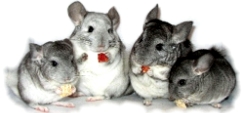I think you misunderstood, it's timothy hay, but the brand is called alfafa king (alfafa is also called lucerne here in uk but can also be called alfafa because it's a more well known term). From what a read in this book by a vet, the hay needs to be fresh yes but also have a certain level of dryness. what it means is that the hay should be harvested, then stored in a manner so it dries out a little (they usually refer it as barn dried here)becoming crisp and not so moist and soft and a slightly less bright green unlike if you cut the grass in your back garden and fed it straight off to the chins. So what it says is that it should be slightly dry but not too much, still fresh enough and green. I think it's just to get the excess moisture out of it. Then Again, methods here in Europe might differ from America. I know for a fact that when it comes to feeding rodents and lagomorphs, a lot of people here in Europe prefer to give natural foods as close as possible to what would be the wild diet. In fact there is a trend in germany where they have stopped pellets alltogether and only feed a variety of fresh plants and grass. There is also some pelleted food with no added sugars or binders, everything is made from natural ingredients (mixture of timothy and alfafa with other edible grasses especialy fescues, rye and barley grass)and fillers and binders are replaced with dandelion, nettle or parsnip roots. We also like to give some edible flowers and herbs in small doses from time to time like: dandelion, echinacea, melissa, thyme, rosemary, basil, chamomile to name but a few. I think we like to provide our pets with food that is varied, interesting and enriching giving the pet the opportunity to use some of it's natural instincts, also some of these herbs are proven to help prevent certain illnesses. For example, from time to time, I replace my dwarf hamster food by a whole millet spray, sorghum or wheat ear. It's actually quite interesting to see them climbing the stems and using their dexterity to get the seeds off. Another thing some people and I do that most others would shun at or think it's gross, is that we give hamsters a live mealworm. One of my chinese looks like a cat on a hunt when he spots it lol. quite fun to watch and he certainly enjoy them. But anyway I guess that's just a matter of culture and opinion.

 Author
Topic: GUIDE: How to determine good Timothy Hay (Read 3354 times)
Author
Topic: GUIDE: How to determine good Timothy Hay (Read 3354 times)




